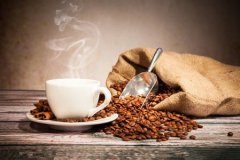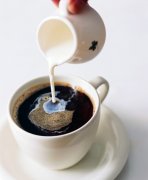When brewing coffee, the ratio of coffee to water
(source: google)
Standard brewing ratio (Standard Brewing Ratio)
Number of cups of coffee
Cups of
Coffee
The amount of coffee used COFFEE TO BE USED
Water consumption WATER TO BE USED
By weight
BY WEIGHT
Meter by measuring tool
BY MEASURE
Ounce Ounces
Gram Grams
Teaspoon Tea
Spoons
Spoon Table
Spoons
Cup Cups
Coffee liquid (oz)
Fluid
Ounces
Number of cups Cups
Pint Pints
Quart Quarts
One GAL, two gallons, two gallons.
Ml CCs
(milliliters)
L Liters
1
0.38
10.6
6
2
1/8
8
1
1/2
1/4
1/8
237
0.24
2
0.75
21.3
12
4
1/4
16
2
1
1/2
1/4
473
0.47
3
1.13
31.9
18
6
3/8
24
3
1 1/2
3/4
3/8
710
0.71
4
1.50
42.5
24
8
1/2
32
4
2
1
1/2
947
0.95
5
1.88
53.2
30
10
5/8
40
5
2 1/2
1 1/4
5/8
1183
1.18
6
2.25
63.8
36
12
3/4
48
6
3
1 1/2
3/4
1420
1.42
7
2.63
74.4
42
14
7/8
56
7
3 1/2
1 3/4
7/8
1656
1.66
8
3.00
85.1
48
16
1
64
8
4
2
1
1893
1.89
9
3.38
95.7
54
18
1 1/8
72
9
4 1/2
2 1/4
1 1/8
2130
2.13
10
3.75
106.3
60
20
1 1/4
80
10
5
2 1/2
1 1/4
2366
2.37
11
4.13
116.9
66
22
1 3/8
88
11
5 1/2
2 3/4
1 3/8
2603
2.60
twelve
4.50
127.6
seventy-two
twenty-four
1 1/2
ninety-six
twelve
six
three
1 1/2
2840
2.84
If you know the amount of coffee powder, multiplied by the coefficient 21.33, you know how many ounces of water you need (0.046875 is the inverse coefficient), multiplied by the coefficient 22.2593, you get how many milliliters of water you need (0.04493 is the inverse coefficient).
For example, if you have 1.2oz coffee powder, multiply it by 21.33g, you will need 25.6oz water; 92.6g coffee powder will need 2061CCs water. The amount of coffee powder required can be obtained by multiplying the inverse coefficient with the known amount of water.
The brewing ratio of enthusiasts Connoisseur's Brewing Ratio
Cups of
Coffee
The amount of coffee used COFFEE TO BE USED
Water consumption WATER TO BE USED
BY WEIGHT
BY MEASURE
Ounces
Grams
Tea
Spoons
Table
Spoons
Cups
Fluid
Ounces
Cups
Pints
Quarts
1/2 Gal
CCs
(milliliters)
Liters
one
0.38
10.6
six
two
1/8
six
3/4
3/8
3/16
3/32
one hundred and seventy seven
0.18
two
0.75
21.3
twelve
four
1/4
twelve
1 1/2
3/4
3/8
3/16
three hundred and fifty five
0.35
three
1.13
31.9
eighteen
six
3/8
eighteen
2 1/4
1 1/8
9/16
9/32
five hundred and thirty two
0.53
four
1.50
42.5
twenty-four
eight
1/2
twenty-four
three
1 1/2
3/4
3/8
seven hundred and ten
0.71
five
1.88
53.2
thirty
ten
5/8
thirty
3 3/4
1 7/8
15/16
15/32
eight hundred and eighty seven
0.89
six
2.25
63.8
thirty-six
twelve
3/4
thirty-six
4 1/2
2 1/4
1 1/8
9/16
1065
1.06
seven
2.63
74.4
forty-two
fourteen
7/8
forty-two
5 1/4
2 5/8
1 5/16
21/32
1242
1.24
eight
3.00
85.1
forty-eight
sixteen
one
forty-eight
six
three
1 1/2
3/4
1420
1.42
nine
3.38
95.7
fifty-four
eighteen
1 1/8
fifty-four
6 3/4
3 3/8
1 11/16
27/32
1597
1.60
ten
3.75
106.3
sixty
twenty
1 1/4
sixty
7 1/2
3 3/4
1 7/8
15/16
1775
1.77
eleven
4.13
116.9
sixty-six
twenty-two
1 3/8
sixty-six
8 1/4
4 1/8
2 1/16
1 1/32
1952
1.95
twelve
4.50
127.6
seventy-two
twenty-four
1 1/2
seventy-two
nine
4 1/2
2 1/4
1 1/8
2130
2.13
If you know the amount of coffee powder, times the coefficient 16, you know how many ounces of water you need (0.0625 is the inverse coefficient), multiplied by the coefficient 16.6945, you get how many milliliters of water you need (0.04493 is the inverse coefficient).
For example, if you have 1.2oz coffee powder multiplied by 16.0, you need 19.2oz water; 92.6g coffee powder requires 1562CCs (1.56L) water. The amount of coffee powder required can be obtained by multiplying the inverse coefficient with the known amount of water.
Comparing the two tables, it is not difficult to find that the so-called brewing of enthusiasts is just a little higher in concentration and heavier in taste. Simple and simple words: one serving of powder, about 16 parts of water.
The picture below is the coffee brewing rate chart of SCAA, which looks a little confused.
(source: scaa.org)
Source: Blackbearcoffee compilation: Huang Wei reprint must indicate the source and the original link
Important Notice :
前街咖啡 FrontStreet Coffee has moved to new addredd:
FrontStreet Coffee Address: 315,Donghua East Road,GuangZhou
Tel:020 38364473
- Prev

The heavy metal content of coffee made by Italian coffee machine exceeds the standard.
Officials at the European Union headquarters in Brussels, Belgium, recently talked about coffee discoloration because coffee made by a batch of coffee machines in the building was found to contain much higher-than-normal heavy metals. The Times reported on the 4th that these Italian-made high-end coffee machines are specially designed for use by some senior officials, including European Commission President Jose Manuel Barroso.
- Next

The basic knowledge of Fine Coffee is explained by COE score Table.
Aroma: Aroma, this is the first evaluation item at the beginning of the cup test, there are a total of three aroma evaluation stages, the first stage is the cup test at the beginning to pick up and smell the dry powder in the cup, the second is the wet aroma after water injection, the third aroma is the broken residue aroma; the aroma is an attractive element of coffee, coffee aroma is a lot of yuan, there are flowers, berries, caramel, nuts, coincidence
Related
- Beginners will see the "Coffee pull flower" guide!
- What is the difference between ice blog purified milk and ordinary milk coffee?
- Why is the Philippines the largest producer of crops in Liberia?
- For coffee extraction, should the fine powder be retained?
- How does extracted espresso fill pressed powder? How much strength does it take to press the powder?
- How to make jasmine cold extract coffee? Is the jasmine + latte good?
- Will this little toy really make the coffee taste better? How does Lily Drip affect coffee extraction?
- Will the action of slapping the filter cup also affect coffee extraction?
- What's the difference between powder-to-water ratio and powder-to-liquid ratio?
- What is the Ethiopian local species? What does it have to do with Heirloom native species?

